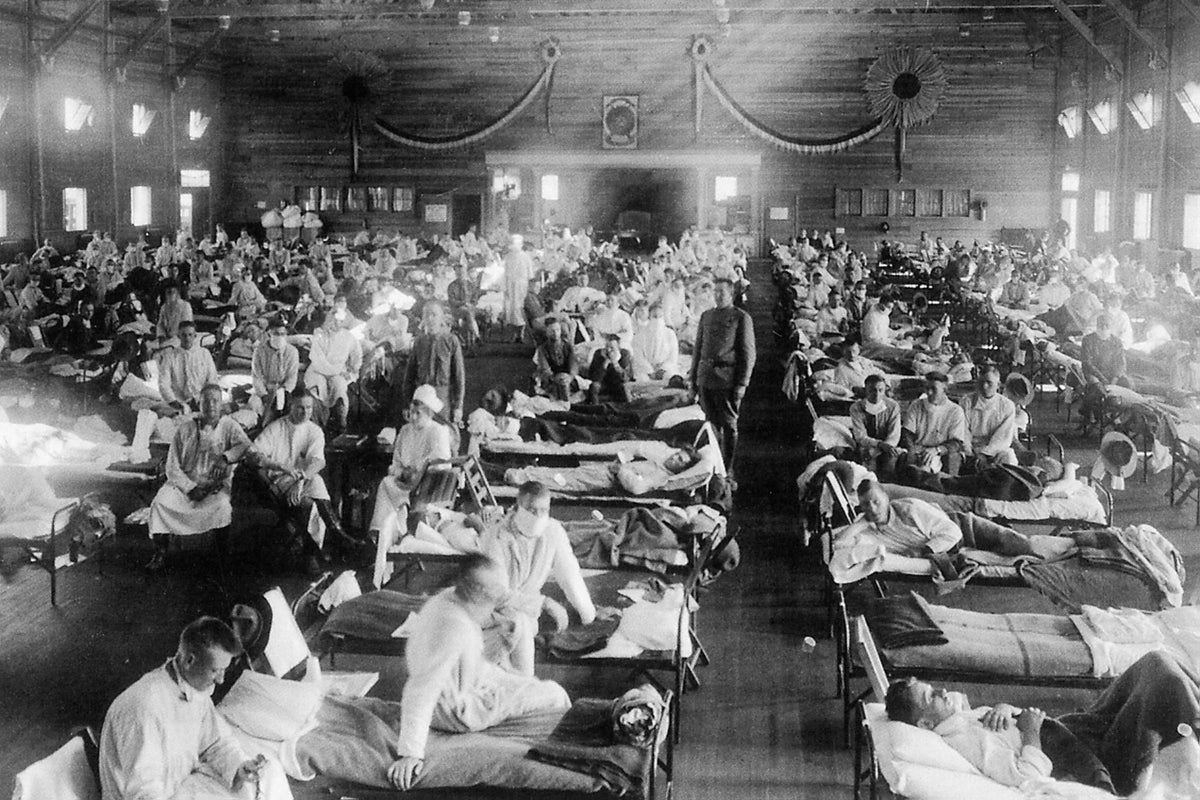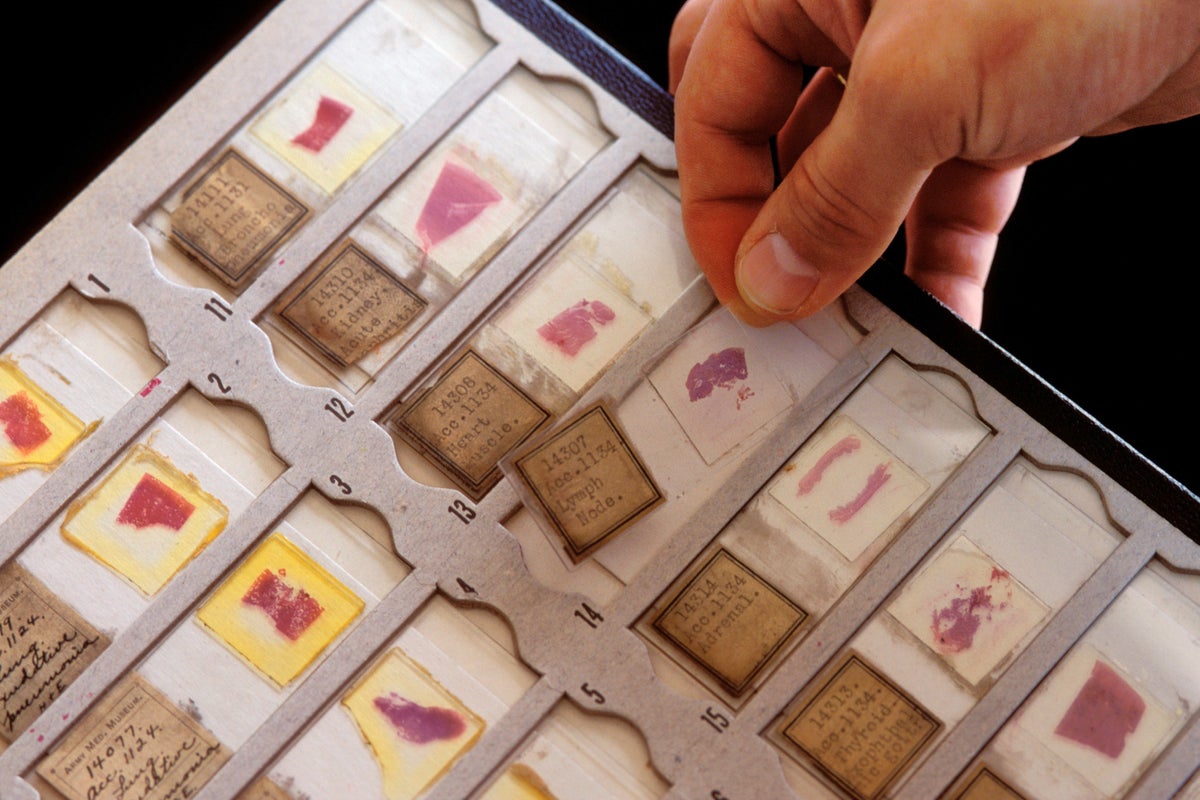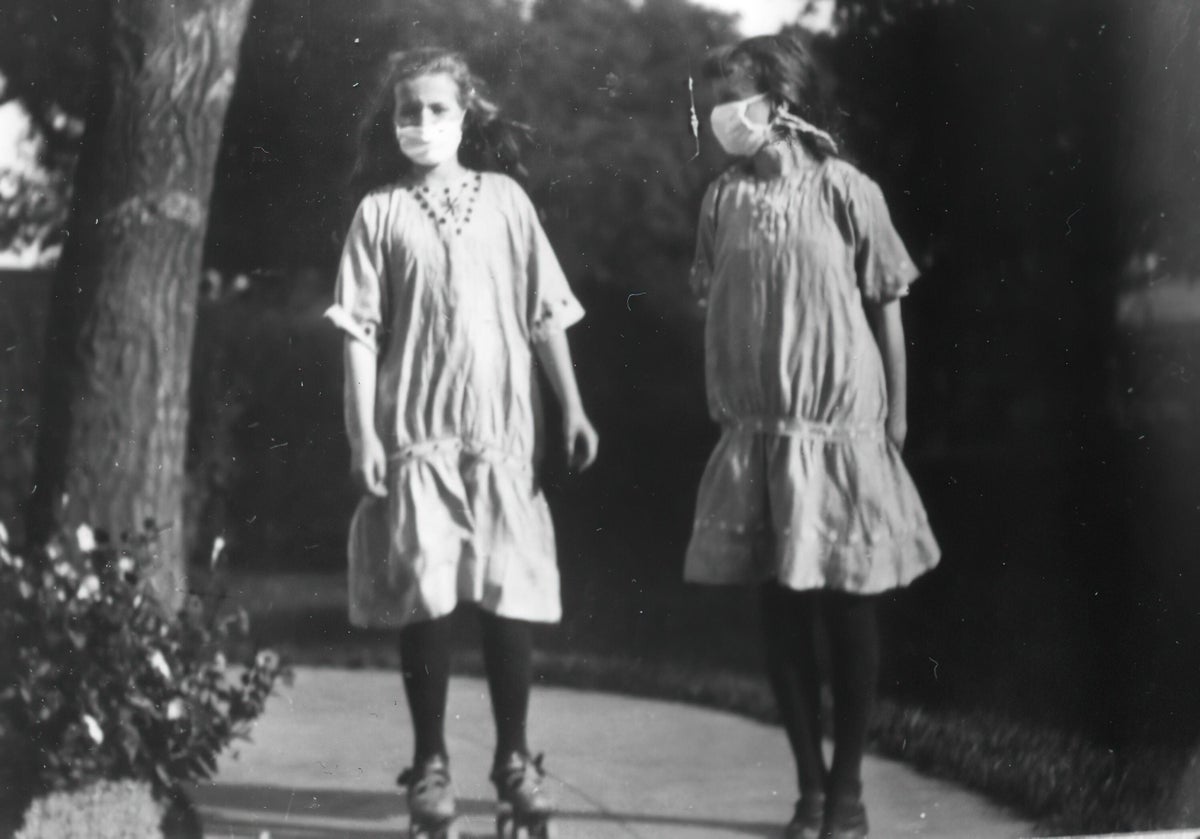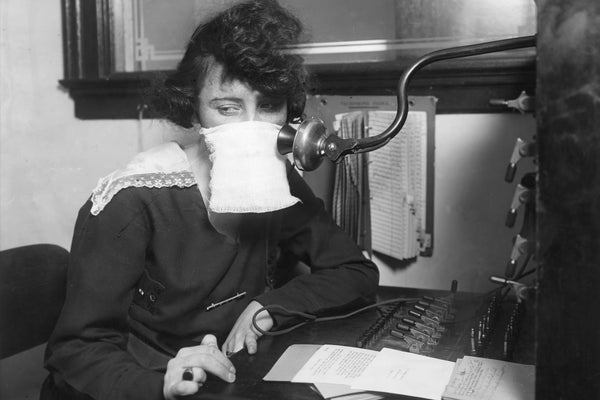A recent Scientific American feature explores how the catastrophic 1918 influenza pandemic seemed to quickly slip from public discourse. The event killed more than 50 million people worldwide, yet it takes up comparatively little space in society’s “collective memory.” The article considers, by analogy, how the current COVID-19 pandemic might be remembered by future generations. Scientific American accompanied the feature with a call for letters telling the stories of families affected by the 1918 crisis. Below are some examples of what we received.
Readers Respond
For what it’s worth, and because you asked for notes about this: my grandfather died in what I believe was the second wave of the pandemic on September 24, 1918. He was 26 and otherwise very healthy. He had two daughters, aged two and under one. The older daughter was my mother, and of course, she and her sister never knew their father in any real sense. My grandmother was deeply affected by his death, as you can imagine, and she always seemed to believe that he had caught a cold and that she could have done more to save him. This made her deeply anxious, more or less permanently, about the health of everyone in the family and especially me—I was named after my grandfather and was very close to her—and I always hid any cold that I had from her. In lots of ways, my grandfather’s death reverberated through the generations: it had a real effect on my mother and, eventually, me. His name was Samuel Rubinson, born August 15, 1892.
On supporting science journalism
If you're enjoying this article, consider supporting our award-winning journalism by subscribing. By purchasing a subscription you are helping to ensure the future of impactful stories about the discoveries and ideas shaping our world today.
Samuel Guttenplan
Professor emeritus of philosophy, Birkbeck, University of London
Regarding the lack of collective memory of the 1918 pandemic, I had the same question when I heard of the pandemic and that my grandmother had died during it. It was the only family story ever told about her. Gone at 38, leaving five small children. My father was nine years old. In my book, Influenza and Inequality: One Town’s Tragic Response to the Great Epidemic of 1918, I wrote of this lack of memory. My book covers the epidemic, and epidemic behavior, in one small town—Norwood, Mass. I have dozens of personal stories in there, stories I heard from survivors, families and descendants. I believe that this lack of collective memory is linked in large part to the population of victims: the majority were young, foreign-born and poor. Influenza did not discriminate but, like today, those who could afford to stay home and avoid infection were the privileged. Then, as now, it was marginal communities—those who lived and worked in hazardous environments and lacked medical access—who were struck down. In 1918 Hispanics and Asians in California; Mexicans in New Mexico and Texas; Polish, Italian and Irish immigrants in northern cities; and, as always, Native Americans and Black individuals were the most severely affected. Children left orphaned were often adopted by others and never told of their history. And, of course, unlike today, the majority of victims were between 20 and 40 years old. Who was going to remember young, poor immigrants? Who was going to build a memorial or write a history for such outcasts? They were nameless, voiceless and, as one scholar noted, “rapidly replaced.” Another early historian of the 1918 epidemic wrote, “If the pandemic had killed one or more of the really famous figures of the nation or the world it would have been remembered.... Spanish influenza characteristically killed young adults and therefore rarely men in position of great authority.” That’s no defense. Hopefully, today’s victims will not be so invisible and easily forgotten.
Patricia J. Fanning
Professor emeritus of sociology, Bridgewater State University

Flu patients get treatment at an army ward in Kansas in 1918.
Credit: Alamy
I just read your article on the 1918 flu (the University of Washington sent it out on our daily newsletter because you interviewed a U.W. faculty member), and I noted the call for stories about ancestors at the end.
It’s funny, that very “forgetting” rang true for me and my family, too. I just spoke with my 91-year-old grandmother about 10 days ago, and she told me that her father (my great-grandfather, Georg Monsen) survived the 1918 pandemic but that his older brother, the older brother's wife and their two kids all died of it. I’ve been alive for four decades and am close to my grandmother, but I never heard any of this history until now. Plus, she said that her father had hearing loss for the rest of his life because of the effects of that flu, as did other members of the family that had it but survived. This all took place in western Norway, where my grandmother is originally from.
Tabitha Grace Mallory
Henry M. Jackson School of International Studies, University of Washington
I’m 71 years old. During my college years, I’d stay at my grandmother’s house almost every weekend. Grandmother and her sister, Anita, shared the house. On Sunday, we’d all go to the local Methodist church that my dad had helped build when he was younger.
One day, back home from church, my Great-Aunt Anita told me that after World War I, her whole family died from the 1918 flu: her husband and children. She believed, very strongly, that God had punished her, and she did not know why.
She still went to church and prayed.
She never talked about it again. If she’d told me how many children she’d had, I don’t remember.
My Grandmother and Aunt Anita have since passed away.
Steven Oliver
via e-mail

Lung slides from the 1918 flu pandemic.
Credit: Karen Kasmauski Alamy
My great-grandfather, Navy Captain John King, made it through the Great War and died of influenza on a hospital ship off City Island in New York City. My grandmother (his daughter) used to take me to lunch on City Island. We always had to drive to the end of the avenue, where we could look across the Long Island Sound and East River to where the ship had been. Grandma would recall her mother asking to be driven there to remember—remember her husband coming home from war and then being on that ship and never coming home again. After this the family (mom and four kids) moved to Baltimore, and Great-Grandma became an expert seamstress to pay the bills.
Karen Romano Young
via e-mail
Among the 675,000 people in the U.S. who lost their lives 102 years ago were nearly all of my great-grandmother’s immediate family. Both of her parents and a brother died. Her first husband and their one-year-old daughter died the same day in October 1918 and were buried together in the same coffin. After losing them, she wrote a letter to the local newspaper thanking friends and neighbors for helping to see her through the devastation. At the age of only 22, she was pregnant with her second child, a son who would never know his father. She also had to raise her younger siblings who survived. Later, she remarried. I am descended from that second marriage.
This happened in Oklahoma, a state that is currently dealing with spikes of COVID-19 and very sporadic mask compliance—with no statewide mandate in place. It’s demoralizing that a century after the 1918 pandemic, I have to ask: What have we learned? That those who do not learn from history are doomed to repeat it.
Shannon Leigh O’Neil
via e-mail

Two people wear masks in this photograph from 1918–1919.
Credit: Alamy
My dad would have been about 16 years old when the 1918 influenza both took his own father's life and sickened him. I was a child when he told me that, as the disease faded, “all [his] hair fell out.” It would be interesting to know if hair loss (head, body or both) was common in survivors of that disease. I’ve read it can follow high fevers.
In 1920 my father—with, by then, an abundant resupply of hair—entered the U. S. Naval Academy. No doubt at least some of his classmates were also influenza survivors. I’m inclined to believe that in the process of bonding with one another, they would have shared their “collective memories” of experiencing “the flu.”
It was routine, in this bonding process, for the men to confer on one another rather graphic or comic nicknames, which sometimes stuck with their recipients. I sometimes wonder whether a fellow survivor in my dad’s unit, being less blessed than my dad with an exuberant regrowth of hair, gave him the nickname that would follow him for the rest of his Navy career: “Woof.”
At age 75, I’m at the tail end of those who were spared by vaccination from the terrible scourges of smallpox, tetanus and diphtheria. But we had to experience for ourselves—and risk the complications—of illnesses now rarely seen in the developed world: measles, rubella, chicken pox, mumps, polio. Such experiences have certainly generated moments of collective memory.
It may not be like surviving the sinking of the Titanic—but each of these epidemics brought a potentially catastrophic aura, and each marked the families who suffered through them.
Elizabeth R. Hatcher
Topeka, Kan.
My paternal grandmother was born in 1900 in Conshohocken, just outside of Philadelphia, to immigrants from Molise, Italy. She was the fourth of 13 children. She was a strong women with few stories. Yet when I was a youngster in the 1960s, several times she told me a short one: “When I was 18 [years old], four of my younger [siblings] died during the [Great Influenza]. They were buried in a mass grave along the cemetery wall. My father died a few years later from a weakened heart.” I am a fairly good amateur family genealogist, having uncovered many family facts, but I have been unable to track this one down well. From the local newspaper and records from the area’s Catholic cemetery, I have confirmed a substantial two-week spike in deaths in Conshohocken shortly after the peak in Philadelphia in the fall. For those two weeks, the front page of the local newspaper was split vertically down the middle: one side covered the Great War, and the other side, the “Spanish flu.” My great-grandfather did indeed die in 1925. For the past five decades, family stories from remote relatives only know of nine children, not 13. Unfortunately, I don’t know the four other children’s names or genders, as I cannot find them in the 1910 census. And by 1920 they are dead—no death certificates. I need to keep working at it.
Michael F. Iademarco
Rear admiral and assistant surgeon general, U.S. Public Health Service
Director, Center for Surveillance, Epidemiology, and Laboratory Services, U.S. Centers for Disease Control and Prevention
